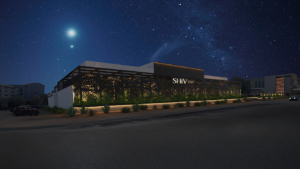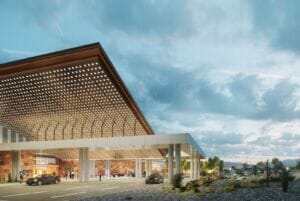There are eight public toilets for every 100,000 Americans. That figure doesn’t include public bathrooms in commercial buildings, like malls and stores.
That’s not that many, right? So it’s crucial that these spaces are accessible and clean.
Without smart public washroom design, it’s challenging to maintain the high standards needed to accommodate users. People rely on clear signage to find a bathroom in the first place, and they need adequate lighting and hygiene facilities to feel safe using one.
If you’re responsible for installing or maintaining public washrooms, read on for a list of essential design tips and tricks.
Install Clear Signage
If no one can find your washroom facilities, they won’t be helpful to anyone! (Though they will stay clean.) And the way to help people find them is with savvy wayfinding.
Wayfinding is the “science” of signage. Designers create a guidance system to direct people to essential features in a given space. In the case of a public washroom, you would want to guide people to:
- Toilets
- Sinks
- Baby changing stations
- Accessible facilities
- Entrances and exits
- Product dispensers
- Refill and supply cabinets
Doing this promotes a user-friendly environment visitors can navigate with ease.
Make It Well-Lit
People are unlikely to want to visit a dark and dingy bathroom, especially at night. A bathroom like this is more likely to attract unsavory characters. Plus, it isn’t easy to see what you’re doing.
On the other hand, a well-lit public bathroom is safe—on so many fronts. They reduce accidents and feel cleaner and more secure.
Focus on installing bright lights throughout the bathroom: above washbasins, inside toilet stalls, and over baby changing stations. You can even create an automated washroom where the lights turn on when someone enters the space.
Is the Bathroom Accessible?
In America, public washroom accessibility is guided by ADA. There is a wide range of standards designers and developers must adhere to when creating a toilet block so that it can be used safely by all community members.
Some of these rules include:
- Wide doors that fit a wheelchair
- Minimum widths for toilet stalls
- Installation of grab bars
- Wheelchair clearance space within a bathroom
- Minimum height requirements for sinks
- Lever-style handles for faucets
- Undercut toilets with a hinged, front-open seat
You’ll also need to consider installing signage that assures users the bathroom is disability friendly.
Focus on Efficiency in the Layout
Most people don’t want to spend a long time in a public toilet; they want to get in and out as quickly as possible. Outside of complying with ADA regulations, you want to focus on creating an efficient, intuitive washroom design.
Place sinks and hand dryers near the exit. Arrange stalls in a way that minimizes congestion while ensuring privacy. Beauty or hygiene product dispensers should be located nearest the space they will be used: the toiler or the sink.
Provide Hygiene Essentials
In a public washroom, cleanliness is paramount, a factor only exacerbated by the COVID-19 pandemic.
The chance of catching something is far higher in public places than in private ones. Good washroom hygiene ensures the space is safe and sanitary for all users. It limits the spread of germs and diseases.
Install a range of touch-free fixtures, like automatic faucets, soap dispensers, and hand dryers like the ones found here: https://www.cnmonline.co.uk/hand-dryer-brands.html. Toilets should be self-flushing; ideally, doors should open and close automatically if unlocked.
Include trash cans in all bathrooms and sanitary disposal units for feminine hygiene products in women’s or unisex restrooms. You may also need to consider installing safe syringe disposal units in some places.
How Private Is the Bathroom?
No one wants to feel unsafe when they’re at their most vulnerable—sitting on the toilet.
A genuinely user-friendly public washroom is a private one. You want to make patrons feel confident when using your facility.
To do this, provide:
- Sturdy and properly fitted doors
- Partitions and walls of an adequate height
- Soundproofing
- Frosted or non-transparent barriers
- Emergency alerts in all stalls and the bathroom proper
- Fire extinguishers or sprinklers
Regularly check the bathroom for cameras and ensure all emergency features are working.
Make It Easy to Clean
You need to clean public bathrooms regularly—typically multiple times a day. Your design should make washroom maintenance simple for staff and patrons.
Install trash cans with wide mouths so people don’t miss the opening when discarding items. Make sure they’re easy for staff to empty, too. Use durable, easy-to-clean materials for walls, floors, and fixtures. Schedule regular toilet and sink maintenance with a local plumber to make repairs before they become urgent.
Make space on a wall near the door for a cleaning chart or digital screen so staff can record cleaning times.
Make It Easy to Restock
This tip relates to the above point on making maintenance easy.
If staff can’t find or have to walk miles to get the products they need to restock, they may not do it. This can result in a messy public restroom—and that’s something no one wants! Place stock rooms and storage cupboards in or nearby the restroom; install a lock if you worry about security.
Ensure, too, that the stock room or storage cupboards are well organized. Install shelves, drawers, and labeling systems. This will make it easy to find items when needed and see when they need restocking.
Designing a Public Washroom for Everyone
A public washroom is a necessity in today’s society, especially for older adults, children, or people with special needs, who may need to use the toilet often when out and about.
To ensure users feel safe, create a well-lit, hygienic, simple-to-find, and easy-to-move-in public bathroom. This means considering the design of the toilet block carefully before it’s built or when renovating.
Let’s make sure our public bathrooms are a nice place to visit for every member of the public, no matter their social status or accessibility needs!
For more thoughtful design advice, check out the other articles on our website.




